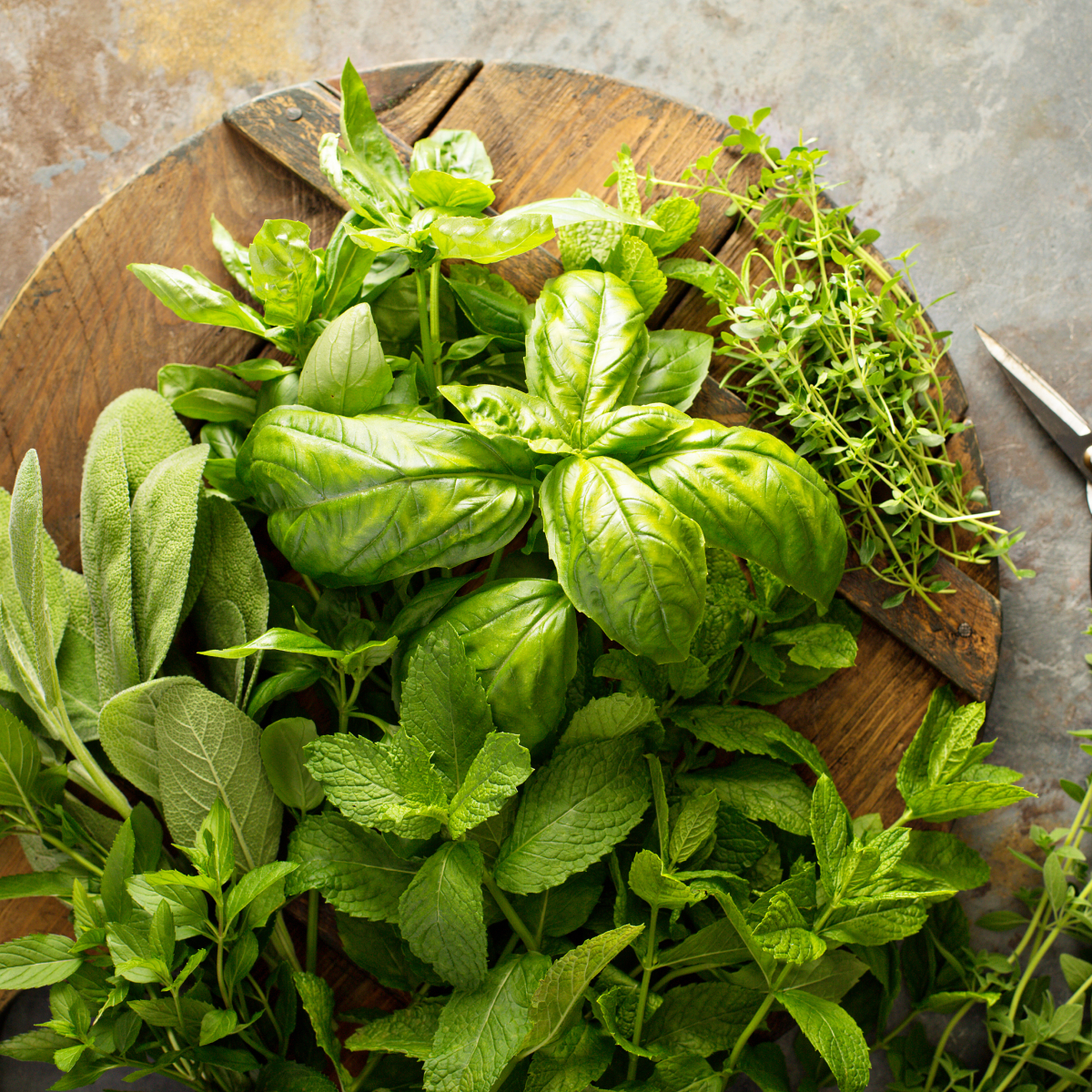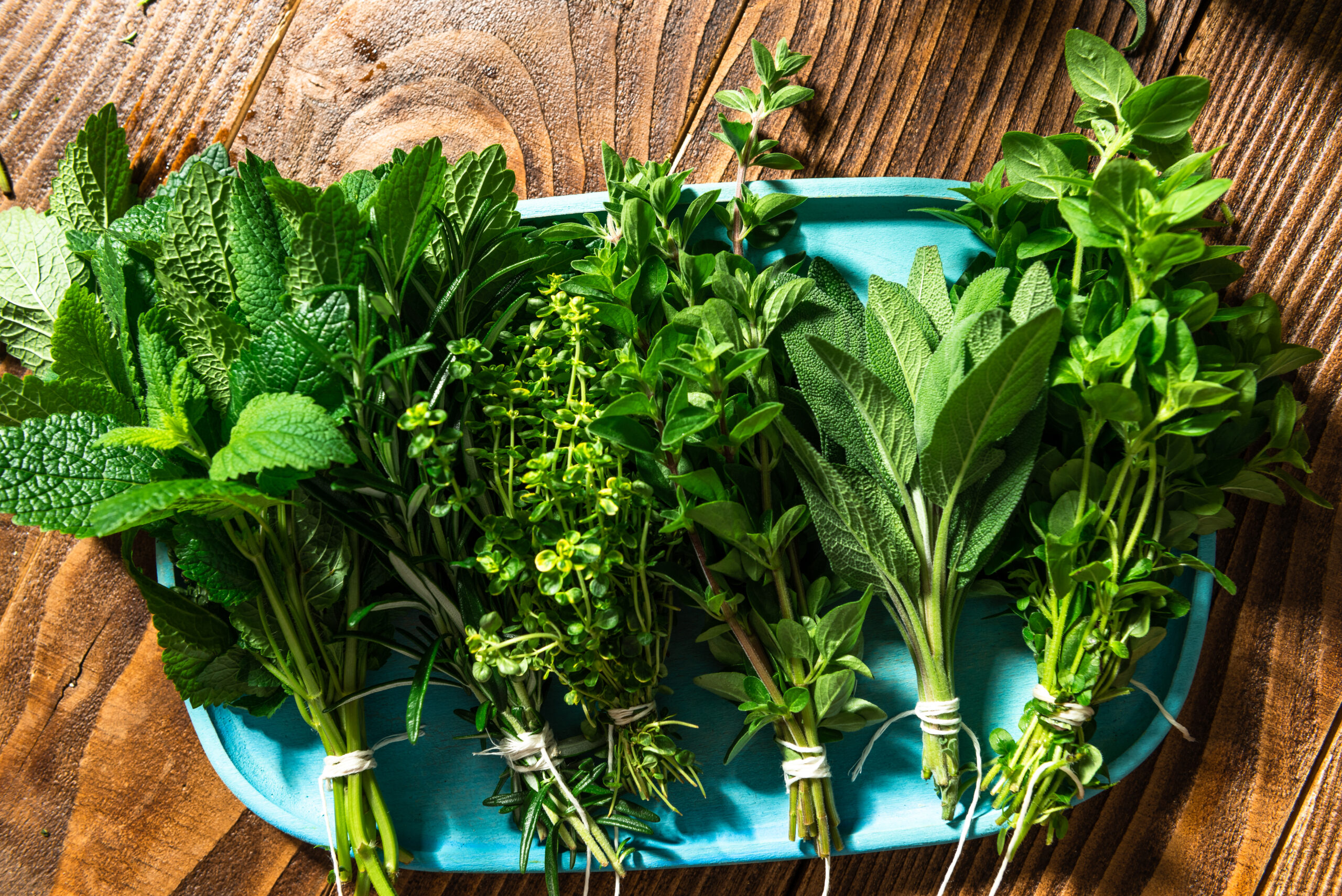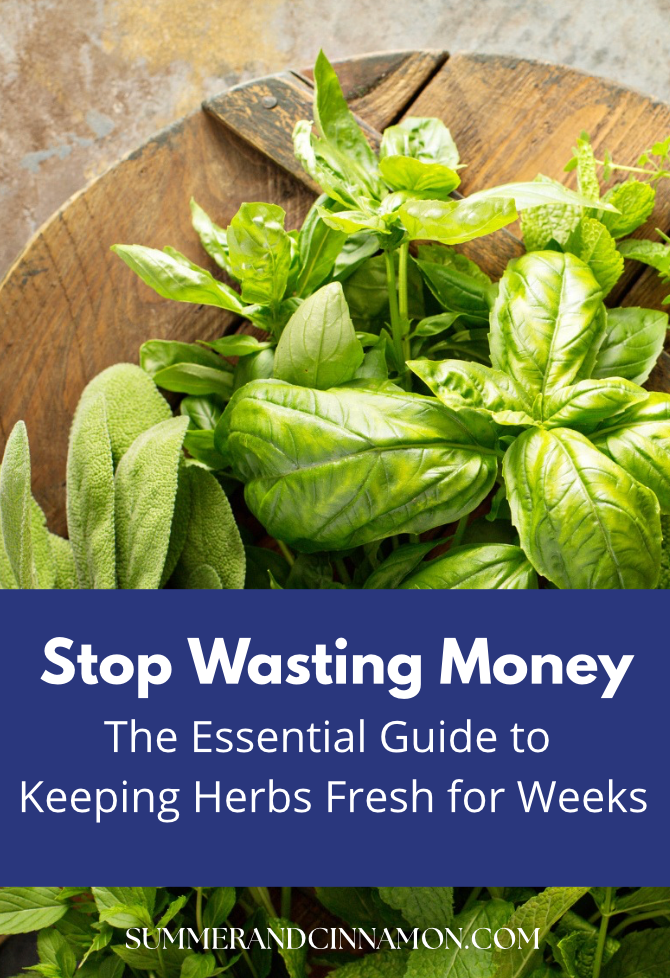Fresh herbs can completely transform a dish—adding brightness, flavor, and that touch of something special. But anyone who’s ever bought a bunch of parsley or cilantro knows the frustration: one day they’re perky and green, and the next they’re wilted and slimy at the bottom of the fridge.

The good news? With a few smart storage tricks, you can extend the life of your herbs and get the most out of every bunch. Here’s how to keep your fresh herbs lasting longer.
Jump to:
Step 1: Know Your Herb Type
Herbs generally fall into two categories, and the way you store them depends on which group they’re in:
- Tender herbs (soft stems + delicate leaves): parsley, cilantro, dill, mint, basil, chervil, tarragon.
- Hardy herbs (woody stems + sturdier leaves): rosemary, thyme, sage, oregano, marjoram.
Step 2: Trim and Wash
Before storing, give herbs a quick rinse under cold water to remove dirt. Shake off excess moisture, then gently pat them dry with a clean kitchen towel or paper towel. (Too much water leads to faster spoilage.)
For hardy herbs, you may only need to wipe them with a damp towel instead of a full rinse.

Step 3: Storage Methods
For Tender Herbs (like parsley, cilantro, dill, mint):
- Jar in the fridge method:
- Trim the ends of the stems.
- Place the bunch in a jar with about an inch of water (like a bouquet of flowers).
- Cover loosely with a plastic bag.
- Store in the fridge (except basil—see below).
- Change the water every few days.
- For basil: Basil is sensitive to cold and turns black in the fridge. Store it in a jar of water at room temperature, just like fresh flowers.

For Hardy Herbs (like rosemary, thyme, sage, oregano):
- Damp towel wrap method:
- Dampen a paper towel slightly (not soaking).
- Wrap the herbs loosely in the towel.
- Place them inside a resealable plastic bag or airtight container.
- Store in the crisper drawer of your fridge.
Step 4: Keep Moisture in Check
Moisture is the biggest culprit for wilted herbs. If you notice condensation building in your container or bag, open it, dry the herbs, and replace the towel or bag.
Bonus Tip: Freeze for Long-Term Storage
If you can’t use herbs before they wilt, freezing is a great option:
- Chop and freeze in oil: Chop herbs, pack them into ice cube trays, and cover with olive oil. Pop them out as needed for soups, sautés, or sauces.
- Whole leaf freeze: Spread herbs flat on a baking sheet, freeze, then transfer to a freezer bag. Works well for hardy herbs like rosemary and sage.

Quick Recap: Best Storage by Herb
- Cilantro, parsley, dill, mint: In a jar of water in the fridge, loosely covered.
- Basil: In a jar of water at room temp.
- Rosemary, thyme, sage, oregano: Wrapped in a damp towel, in a bag/container in the fridge.
Final Thoughts
Fresh herbs don’t have to be a race against the clock. With the right storage method, you can stretch their life from just a few days to over a week—and sometimes even longer. That means fewer wasted bunches, more flavorful meals, and a kitchen that always smells just a little fresher.
Pin to Pinterest

Related
Looking for other recipes like this? Try these:
Pairing
These are my favorite dishes to serve with [this recipe]:












